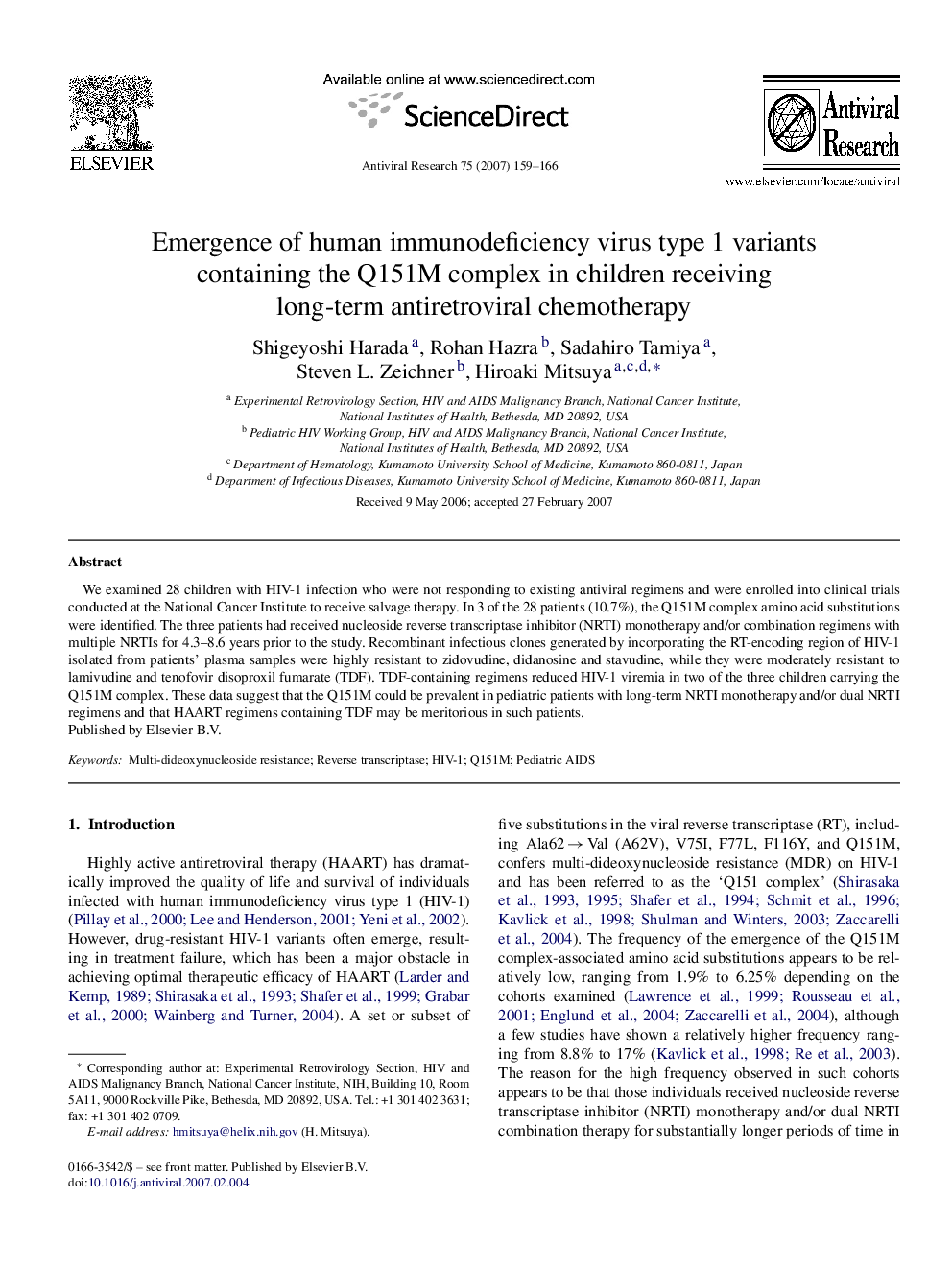| Article ID | Journal | Published Year | Pages | File Type |
|---|---|---|---|---|
| 2511378 | Antiviral Research | 2007 | 8 Pages |
Abstract
We examined 28 children with HIV-1 infection who were not responding to existing antiviral regimens and were enrolled into clinical trials conducted at the National Cancer Institute to receive salvage therapy. In 3 of the 28 patients (10.7%), the Q151M complex amino acid substitutions were identified. The three patients had received nucleoside reverse transcriptase inhibitor (NRTI) monotherapy and/or combination regimens with multiple NRTIs for 4.3-8.6 years prior to the study. Recombinant infectious clones generated by incorporating the RT-encoding region of HIV-1 isolated from patients' plasma samples were highly resistant to zidovudine, didanosine and stavudine, while they were moderately resistant to lamivudine and tenofovir disoproxil fumarate (TDF). TDF-containing regimens reduced HIV-1 viremia in two of the three children carrying the Q151M complex. These data suggest that the Q151M could be prevalent in pediatric patients with long-term NRTI monotherapy and/or dual NRTI regimens and that HAART regimens containing TDF may be meritorious in such patients.
Related Topics
Life Sciences
Immunology and Microbiology
Virology
Authors
Shigeyoshi Harada, Rohan Hazra, Sadahiro Tamiya, Steven L. Zeichner, Hiroaki Mitsuya,
